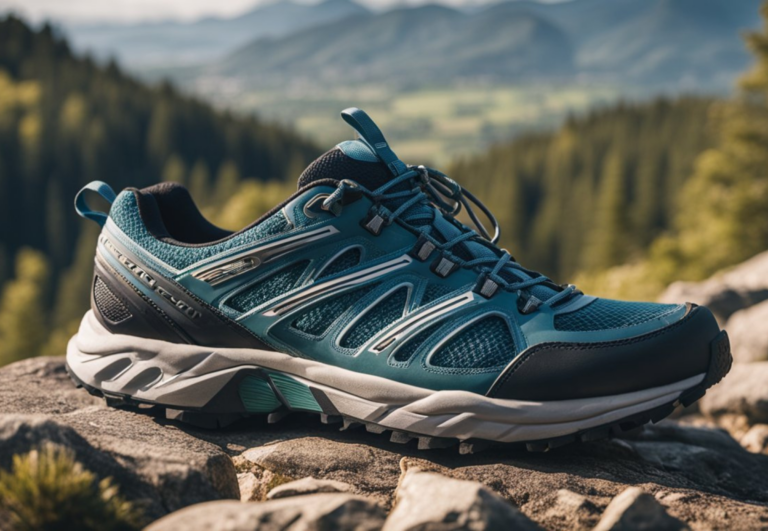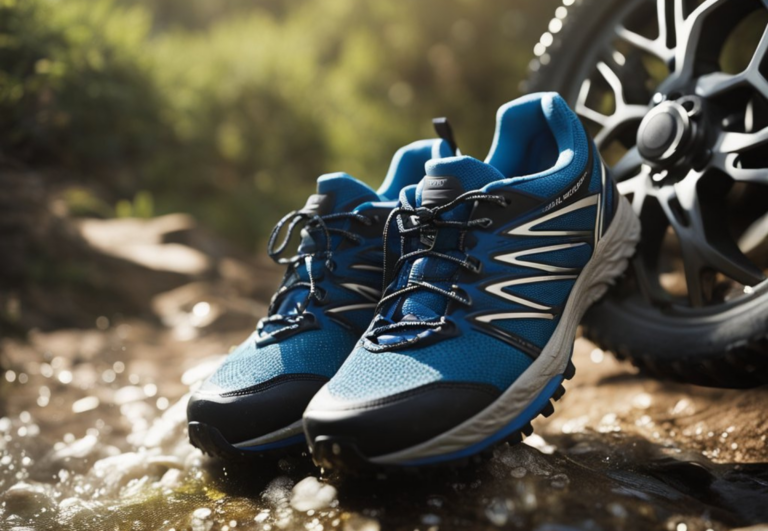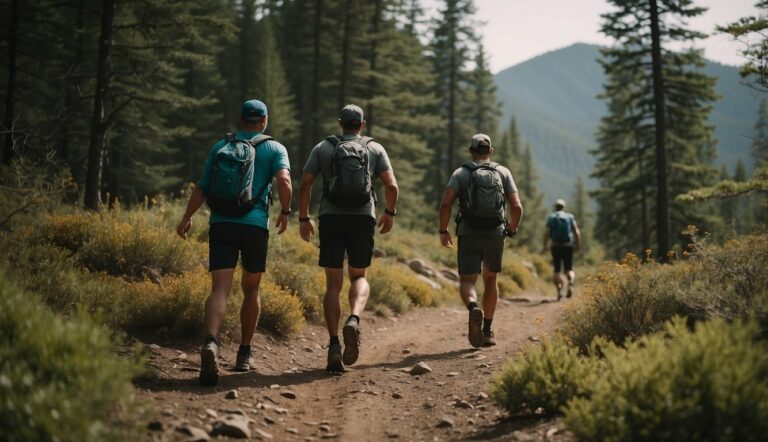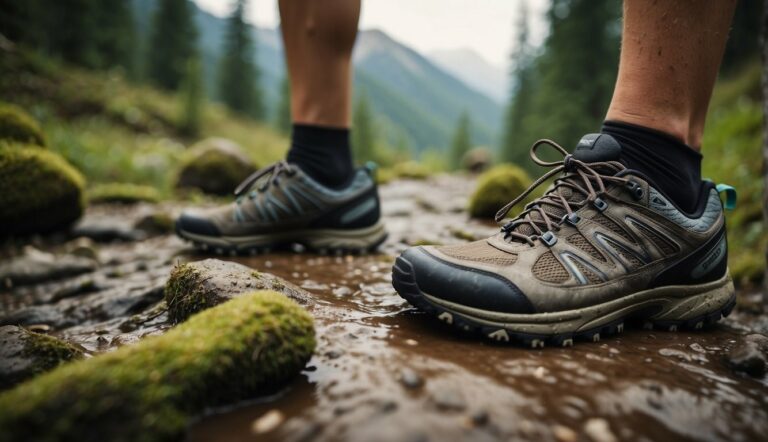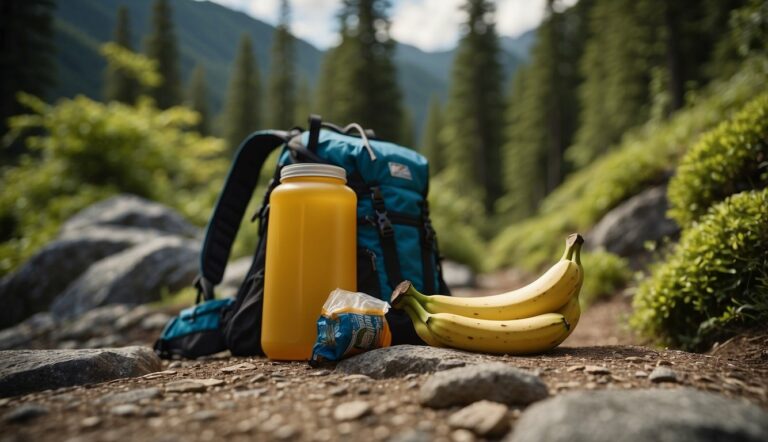Traveling for Trail Running: Essential Planning Tips for Your Next Adventure
Traveling for trail running combines the thrill of exploring new terrains with the joys of running. As a UESCA certified running coach, I’ve found that careful planning can significantly enhance your trail running adventure. When selecting a destination, consider factors like the climate, trail options, and the unique challenges the topography may pose. It’s essential to ensure that the location aligns with your running abilities and goals, whether you’re seeking serene forest trails or rugged mountain paths.
Before embarking on your journey, research is paramount. I recommend looking into local trail running communities and available maps to gauge the area’s popularity and trail conditions. Additionally, pack gear that suits the environment, prioritizes comfort, and adapts to varying weather. Remember, the right equipment can make a significant difference in your running experience, so choose wisely to keep the focus on the adventure ahead.
Adventuring into trail running in new destinations opens up a world of breathtaking landscapes and physical challenges. Every run is an opportunity to discover something new, not only about the place but about your abilities as a runner. Whether you’re crossing valleys, conquering peaks, or navigating forested paths, always remain mindful of local customs, safety regulations, and the Leave No Trace principles to ensure a respectful and enjoyable experience for all.
Planning Your Destination as a Trail Runner
When planning a trail running trip, the right destination makes all the difference. My focus will be ensuring you’re well-informed about selecting the right location, understanding the weather and terrain, and appreciating local culture.
Selecting the Trail Running Destination
Selecting the perfect trail running destination involves considering several key factors such as accessibility, diversity of trails, and scenic value. Look for a place that excites you but also matches your running abilities. Whether it’s a well-known international destination or a hidden gem closer to home, research is crucial. Use a map to scope out potential trails and note the proximity to accommodation and other amenities.
Top Tip: Pick a balance between challenging terrain and breathtaking views to keep both your body and mind engaged.
Understanding Local Weather and Terrain
The weather and terrain of a trail running destination can significantly affect your experience. Before setting out, check the seasonal weather conditions, as these can impact trail accessibility and safety. Here’s a table to guide you through what to consider:
| Aspect | What to Look For |
|---|---|
| Weather | Temperature ranges, rainfall, seasonal shifts |
| Terrain | Elevation changes, trail difficulty, surface |
| Daylight Hours | Sunrise and sunset times, to plan your runs |
Always prepare for the unexpected, as weather can change rapidly, especially in mountainous areas.
Cultural Considerations and Research
Understanding local culture is integral to a positive trail running travel experience, particularly when visiting international destinations. Learn a bit about the local customs, language, and etiquette to show respect and enhance your trip. Research can involve reading travel blogs, consulting with fellow runners, or engaging with local running communities online.
Tip: Be mindful of cultural norms around appropriate clothing, especially in more conservative countries.
With thorough planning, your trail running adventure can be a journey that nourishes both your athletic ambition and your appreciation for the world’s diverse landscapes and cultures.
Trail Running Gear and Equipment To Travel
When planning a trail running trip, having the right gear and equipment can make a significant difference in comfort, performance, and safety. Let’s discuss what’s essential to pack.
Essential Gear for Trail Running
In my experience, a few key items should be on every trail runner’s checklist. A GPS watch is crucial for navigation and tracking distance and pace.
A hydration pack or vest helps maintain fluid levels, while energy gels or bars provide on-the-go nutrition. Don’t forget a waterproof running jacket for unpredictable weather, and if the trail is known for debris, gaiters are a wise choice to protect against it.
- GPS Watch: For navigation and tracking metrics.
- Hydration Pack/Vest: For maintaining fluid levels.
- Energy Gels/Bars: For sustaining energy levels.
- Waterproof Running Jacket: For weather protection.
- Gaiters: For protection against debris.
Choosing the Right Trail Running Shoes
Choosing the right trail running shoes is essential. They should offer good grip for diverse terrains and adequate protection against rocks and roots. A balance between cushioning and stability is important to handle uneven trails while preventing fatigue and injury.
- Grip: Look for outsoles with deep lugs for traction.
- Protection: Durable uppers and toe guards.
- Cushioning and Stability: A balance to suit individual needs and trail conditions.
Hydration and Nutrition on the Trail
For longer runs, a hydration pack or vest is an essential accessory. They provide easy access to water and leave your hands free. Plan your water intake and consider electrolyte supplements for longer distances. High-energy, easily digestible energy gels or chews are convenient for sustained fueling.
- Hydration Pack/Vest: For accessible water.
- Water Intake: Plan according to the distance and conditions.
- Energy Gels/Chews: For quick and convenient energy boosts.
Travel Logistics and Accommodations for Trail Runners
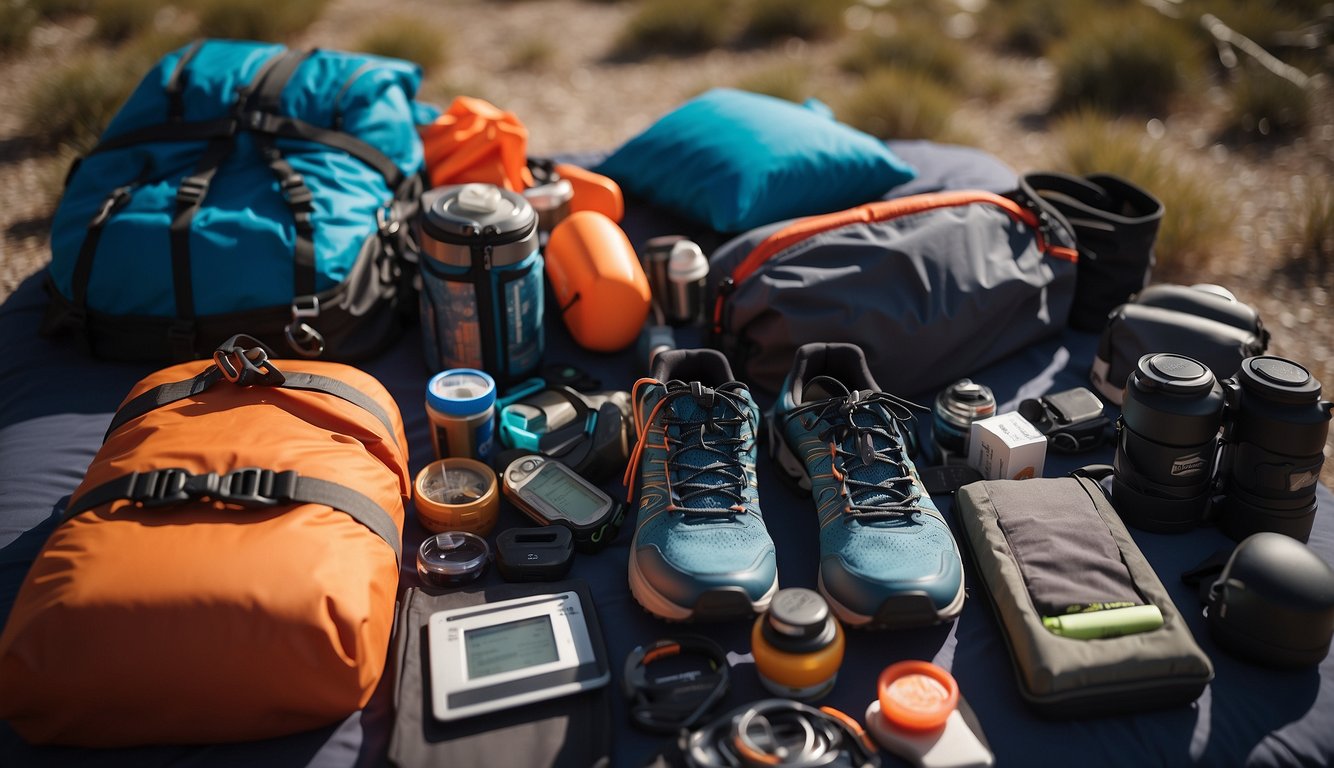
Preparing the travel logistics and accommodations can make a trail running trip both smoother and more enjoyable. I’ll guide you through booking your travel, finding the best places to stay, and packing essentials, ensuring your focus remains on the trail.
Booking Flights and Ground Transportation
Flights:
- Book early for the best rates.
- Be flexible with dates to take advantage of potential savings.
Ground Transportation:
- Arrange for a rental car or shuttle service ahead of time if public transport isn’t trail-friendly.
- Have local currency on hand for any immediate travel costs upon arrival.
Finding Trail-Friendly Accommodations
- Look for a hotel or lodging within close proximity to trailheads.
- Ensure they provide amenities for runners, such as laundry & nutritious breakfast options.
- Tip: Use apps or websites focused on outdoor travel for recommendations.
| Accommodation Type | Proximity to Trails | Runner Amenities |
|---|---|---|
| Hotel | 1-5 km | Gear storage, laundry |
| Cabin/Lodge | Adjacent to trails | Kitchen, trail maps |
| B&B | 1-10 km | Hearty breakfast, local trail advice |
Packing for a Trail Running Trip
- Pack light to keep flexibility; bring versatile, multi-use items.
- Essential gear: Trail shoes, weather-appropriate clothing, hydration pack, GPS or map, first-aid kit, and running nutrition.
| Category | Essentials |
|---|---|
| Gear | Trail shoes, hydration pack |
| Clothing | Moisture-wicking layers |
| Navigation | GPS device or physical map |
| Safety | First-aid kit |
| Nutrition | Energy gels, electrolyte mix |
Training and Preparation
To ensure success on your destination trail running trip, your preparation must include tailored training for fitness, familiarization with specific route characteristics, and physiological adaptations to potential altitude changes.
Building Endurance and Fitness
Endurance and Fitness: My focus on building endurance revolves around incrementally increasing running distances each week.
I advise starting with a foundation that suits your current fitness level before gradually adding mileage. For beginners, this might mean beginning with shorter, more manageable distances and working up to the race length over several months.
Training Plan Structure:
- Monday: Rest or low-impact cross-training
- Tuesday: Short, easy pace run
- Wednesday: Hill or interval training to improve strength and running economy
- Thursday: Rest or low-impact activity
- Friday: Moderate-distance run at a conversational pace
- Saturday: Long, slow distance run to build aerobic capacity
- Sunday: Rest or easy run
Remember, the key to building fitness is consistency and progressive overload within one’s personal limits to avoid overtraining.
Adapting to Altitude and Terrain
Adapting to Variables: When a destination race involves considerable elevation gain or takes place at high altitude, I suggest integrating hill workouts and simulating trail conditions during training.
For high altitude, if possible, training at altitude is beneficial. If this isn’t feasible, I recommend incorporating specific breathing exercises and endurance workouts that improve the body’s efficiency in utilizing oxygen.
Key Training Action Points:
- Introduce elevation gain in your training through hill repeats.
- Practice running on a variety of terrains to develop stability and improve gait.
- If training at high altitude isn’t possible, focus on cardiovascular training to aid in acclimatization.
Specific Training for Destination Races
Race-Specific Preparation: It’s crucial to understand the specifics of your destination race’s route, including distance, terrain type, and cumulative elevation gain. With this information, I customize my training regime to match the route’s demands. This involves not just running, but also working on my cadence and running form to navigate the terrain efficiently and safely.
Training Examples for Route Specificity:
- For technical terrains: Incorporate agility drills and technical trail runs once per week.
- For long distances: Include a simulation run that’s at least 75% of the race distance.
- Adjust your pace expectations; trail running requires different pacing strategies than road running.
In summary, your training should be a mix of distance building, varied terrain exposure, and altitude adaptation, keeping in mind that pacing strategies on trails differ substantially from road races. With dedicated preparation, you’ll be ready to tackle your destination trail running adventure.
Safety and Navigation
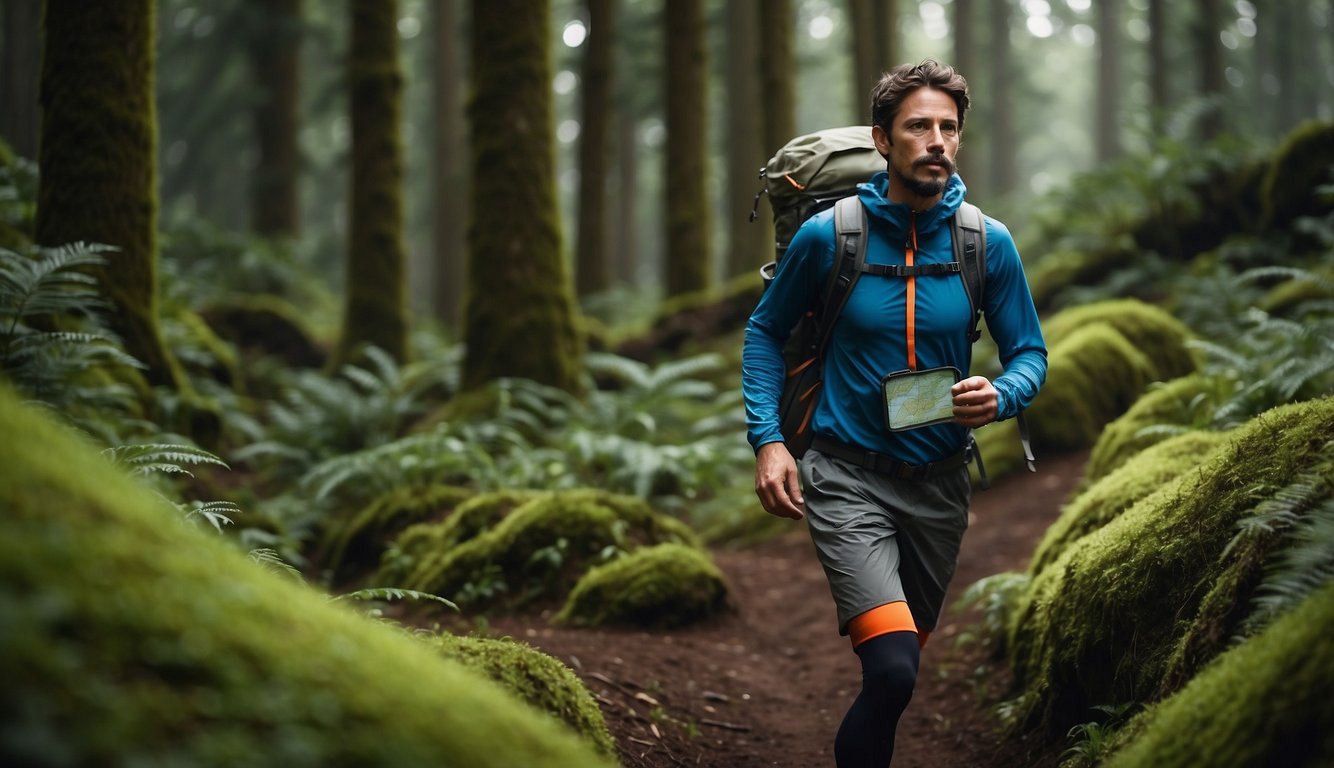
When planning a trail running trip to a new destination, prioritizing safety and adept navigation is essential. My experiences have shown that understanding the terrain, honing your navigation skills, and being prepared for wildlife and unexpected challenges are the cornerstones of a safe and enjoyable adventure.
Staying Safe in Unfamiliar Terrain
Before hitting unfamiliar trails, it’s vital to research the surface and typical obstacles you might encounter.
It’s also imperative to check the weather and wear appropriate clothing for protection and to ensure adequate traction underfoot. Always inform someone about your running plan, including the trails you intend to explore and your expected return time.
Navigation Skills for Trail Runners
In the backcountry, reliable navigation is your safety net. Maps should be studied in advance, and carrying a compass is non-negotiable.
While GPS devices and apps add a layer of convenience, they should not replace traditional methods as batteries can die and signals may be unreliable. Practice using a map and compass together; if GPS is available, use it to confirm your readings.
| Essential Navigation Tools | Purpose |
|---|---|
| Map | Provides terrain features and trails |
| Compass | Assists in orienteering and direction |
| GPS Device/App | Offers real-time location data |
Preparing for Wildlife and Other Challenges
I advise carrying a basic first-aid kit and knowing how to use it. Learn about the local wildlife you may encounter and understand the appropriate actions to take if you come across them. Moreover, always carry enough water, food, and a whistle or mirror for signalling in case you get lost. Challenges can arise quickly in the backcountry, and being prepared is your best defense.


